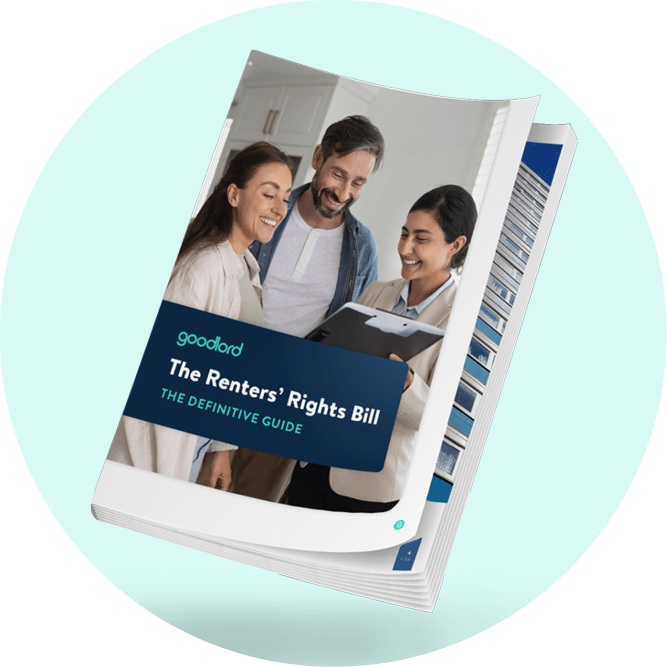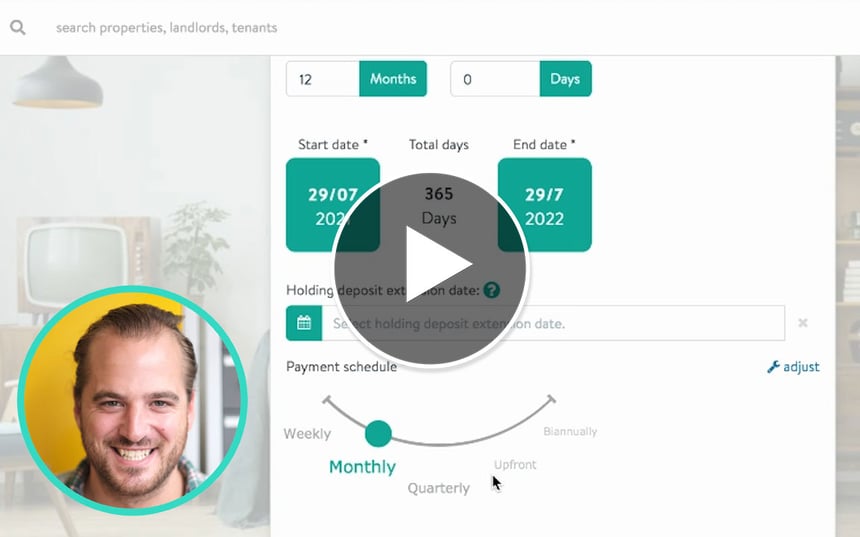The past and present of Scottish rent controls
Kevin Davidson-Hall gives his insights on Scotland's lift on the rent caps and the latest rules Scottish letting agents and landlords need to adhere to, find out more.
I was reminded of the story written by Charles Dickens,” A Christmas Carol” when I was asked to write this article, as it occurred to me that The Scottish Government has cast itself in the role of Ebenezer Scrooge; there is certainly no shortage of Humbug coming from Edinburgh these days.
But I have some news for the Scottish Government. “Bah! Humbug!" Rent controls simply do not work.
UK data from the Office for National Statistics (ONS) released on 17 April 2024 reveals the largest increase in average rents since 2015, was in Scotland. Rents which have had a cap since September 2022, have increased more than in any other country in the United Kingdom.
ONS figures show that during the year to March 2024, average monthly rents in Scotland went up by more than in England, which went up by 9.1%, while Scottish rents rose by 10.5% to £947pcm. This is proof enough for me that rent control in Scotland has had the opposite effect from what the Scottish Government said was intended.
- The ghost of rent control past – where have we been?
- The ghost of rent control present – where are we now?
- What do the new rules mean?
- What is the “permitted rent”?
- How do you work out the “calculated amount” and the “market difference”?
- What will this look like in practice?
- How long is it proposed this would be in place?
- How to manage the new rules?
- The ghost of rent control future – where are we headed?
The ghost of rent control past – where have we been?
All this started without much warning, or any real discussion, in September 2022 with The Cost of Living (Tenant Protection) (Scotland) Bill 2022, blowing in like a big Atlantic storm and setting a rent cap at 0%.
The Act also included a moratorium on evictions and made all grounds for recovery of possession discretionary. There was a provision for a landlord to apply to a Rent Officer for a rent increase during the rent cap period, but only in certain circumstances. These circumstances included where a landlord can evidence an increase in certain “Prescribed Costs” costs such as higher mortgage repayments, with increases being limited to 3% of the rent OR to 50% of the increase in prescribed costs, whichever was lower.
The critical date for all this was 6 September 2022 and any rent increase notice issued on or after this date was made void. This regime was in place from 6 September 2022 until 1 April 2023 when the provisions were varied slightly.
From April 2023, the basic Rent Cap was raised to 3%. But a slither of light came in the shape of up to a 6% increase, but only where landlords could evidence an increase in their ‘Prescribed Costs’ – which again was mainly their mortgage repayments.
This very tight framework persisted from 1 April 2023 until 31 March 2024.

The ghost of rent control present – where are we now?
From 1 April 2024, The Scottish Government replaced the previous rent cap, which was relatively simple to understand, with a new and more complicated system. This means while the process by which rent reviews are intimated is unchanged, the basis under which Rent Officers and/or the First-tier Tribunal can adjudicate rental disputes between landlords and tenants is different.
Adjudication is only triggered if a tenant disputes the rent increase and is referred to a Rent Officer for Private Residential Tenancies (PRT) or the First Tier Tribunal for Assured Tenancies or Short-Assured Tenancies.
For PRTs, if a landlord's increase in rent is disputed, tenants will need to lodge an application with a Rent Officer within 21 days of receiving the notice. Failing to do so will mean the new increase will come into effect at the end of the notice period.
Further information and accompanying documents can be found here
What do the new rules mean?
Previously if there was a dispute about a rent increase, under both the Private Housing (Tenancies) (Scotland) Act 2016 and the Housing (Scotland) Act 1988, the comparator of “Open market rent" was used to determine whether the increase was reasonable.
This has now changed to a comparator based on the lowest of 3 measures:
- Open Market Rent (OMR).
- The new rent proposed by the landlord; or
- Where the gap between the tenant’s current rent and the OMR (Known as the “Market Difference”) is more than 6%, which is called the “Permitted Rent”.
These new rules only apply to statutory rent increases for Private Residential Tenancies and Assured (including Short-Assured) Tenancies.
They do not affect contractual rent review clauses in Assured or Short-Assured Tenancies.
Download our Scotland 2024 poster to remind your agents of upcoming datesWhat is the “permitted rent”?
This is where things get a bit more complicated. We no longer have a straight “rent cap” but something that operates in a very similar way. Now rent increases can be no more than 12% (but it is not as simple as just a straight rent cap of 12%) as well as a new formula used for the calculation.
In short, the permitted rent is deemed to be either:
- Where the “Market Difference” is less than 24%, the “Calculated Amount”; or
- Where the “Market Difference is 24% or more, 12% more than the rent currently paid.
How do you work out the “calculated amount” and the “market difference”?
That brings us to the new formulae, which are as follows:
For “Calculated Amount”

“C” is the current rent and “D” is the Market Difference expressed as a percentage.
"Market Difference" as a percentage

Where “C” is the current rent again and “M” is the OMR.
What will this look like in practice?
If a tenant disputes a proposed rent increase by a landlord, at adjudication Rent Officers and the First-tier Tribunal will use the formulae to determine the new rent.
If the “Market Difference” is less than 6%, then then the proposed rent will apply.
If the “Market Difference” is more than 6%, the rent will be increased by 0.33% for every percentage point the “Market Difference” exceeds 6%, but is always subject to a maximum increase of 12%.
For example, if a landlord proposes an increase of 8% (and the gap between current rent and OMR is 8%), the increase allowed at adjudication would be 6.7%.
How long is it proposed this would be in place?
It is suggested that this system would be in place for a maximum of 12 months from 1 April 2024 and be subject to “Regular review”.
However, subject to Parliamentary approval, it is suggested that it could be extended for a further period of 12 months at a time.
The question will be whether these proposed measures will be used to plug the gap between the current rent cap under the Act, and the anticipated longer-term measures under contemplation in the new Housing Bill which I will come to as the draft has now been published.

How to manage the new rules?
As mentioned already, these rules only apply where a tenant disputes the rent increase and seeks a referral to a Rent Officer or the Tribunal.
So, now that the new rules are in force, it will be sensible for Agents tenants and landlords to discuss the new rent and to reach agreement before formally intimating the increase so the number of disputes can be minimised.
These formulae are there to be used by Rent Officers and the Housing and Property Chamber and not agents. However, it makes sense for Agents to understand them and at least work out roughly what may be allowed in the event of adjudication, rather than over-promising rent increases to landlords. It is for the agent and landlord to provide comparable evidence.
One very important thing to note to landlords is that these new rules impose no restrictions on the rent that can be set for a vacant property on change of tenancy.
The ghost of rent control future – where are we headed?
Mr Scrooge has not yet left the stage, yet more change is coming. The Scottish Government introduced and published on 26 March 2024 its long-awaited Housing Bill.
The Parliamentary process for enactment is generally about 2 years, so who knows, it could be that this Bill won’t make it all the way through the Parliamentary process before the General Election due in 2026 and will be impacted by the results, though my feeling was when I penned the first draft of this article that we won’t be that lucky.
But news on 25 April of the Green Party’s departure from the coalition with the SNP could well change all that. It was the Greens who were the driving force behind rent control. I hope the can be a better climate now in which the Housing Bill might be looked at with fresh eyes – some sort of reset in effect.
However, the key thing to take away from this journey is “Bah! Humbug!" rent controls simply do not work!
Kevin Davidson-Hall will discuss the future of Scotland's Housing Bill in a future blog. Please note that the views of this guest article do not necessarily represent the views of Goodlord.










